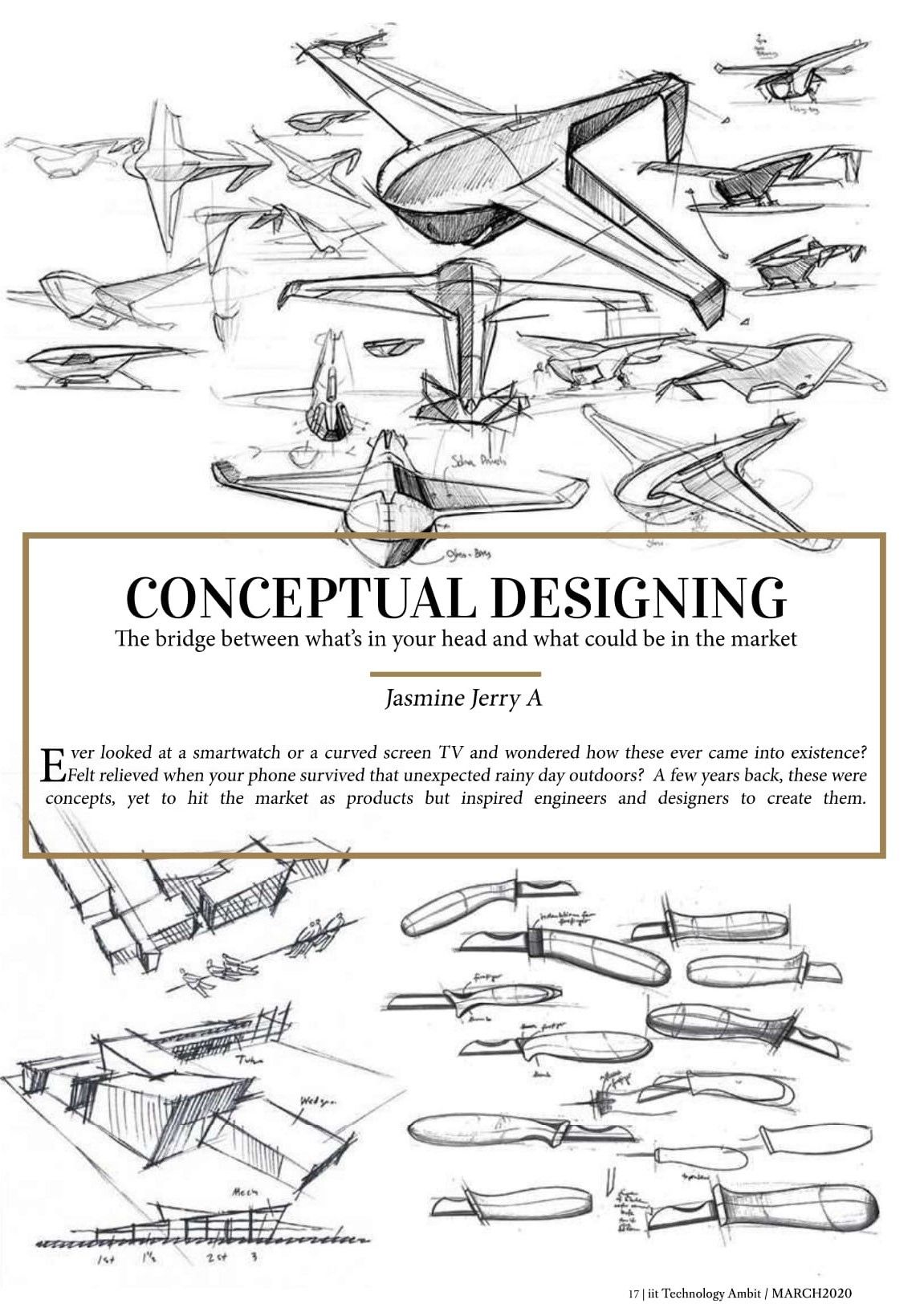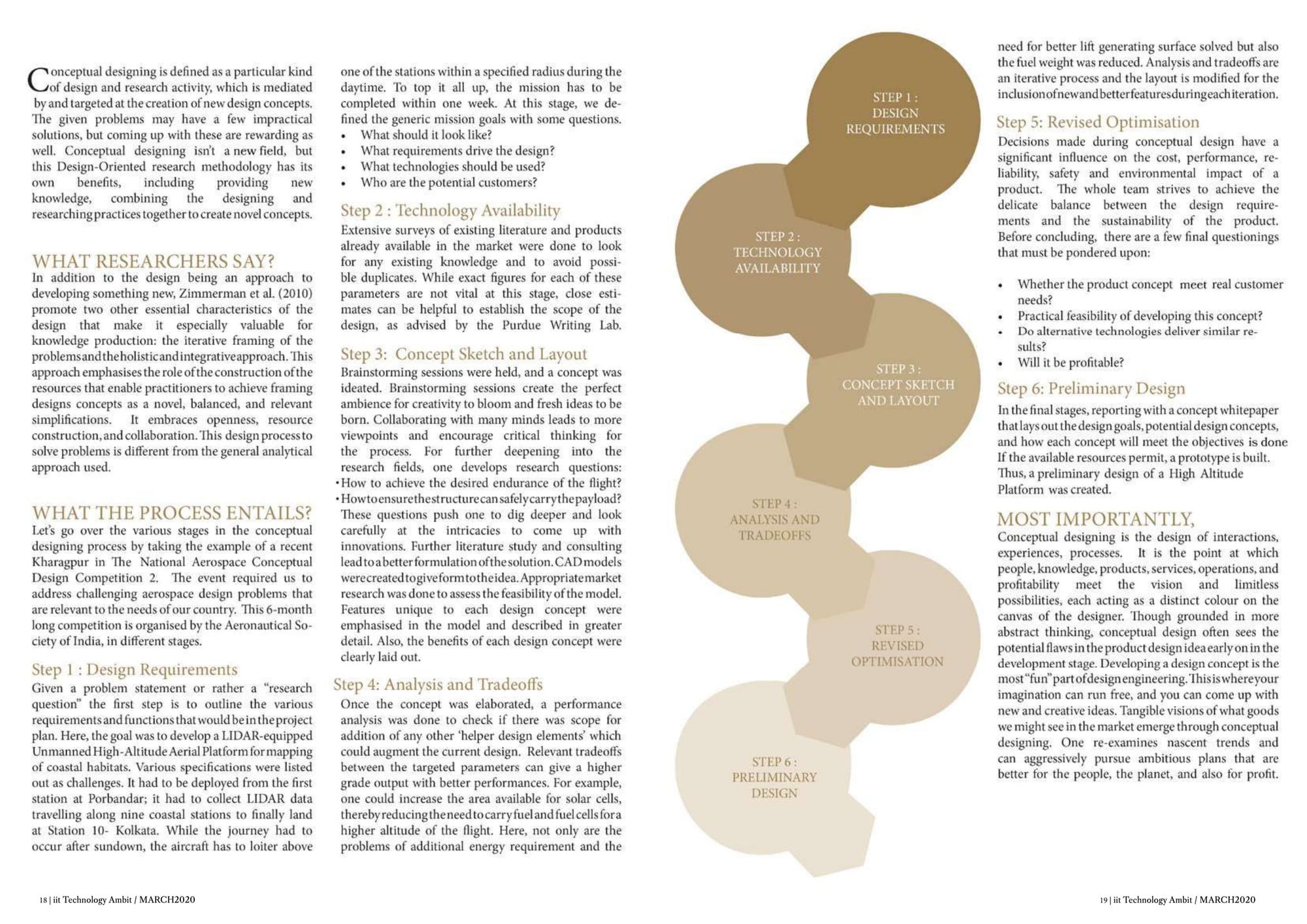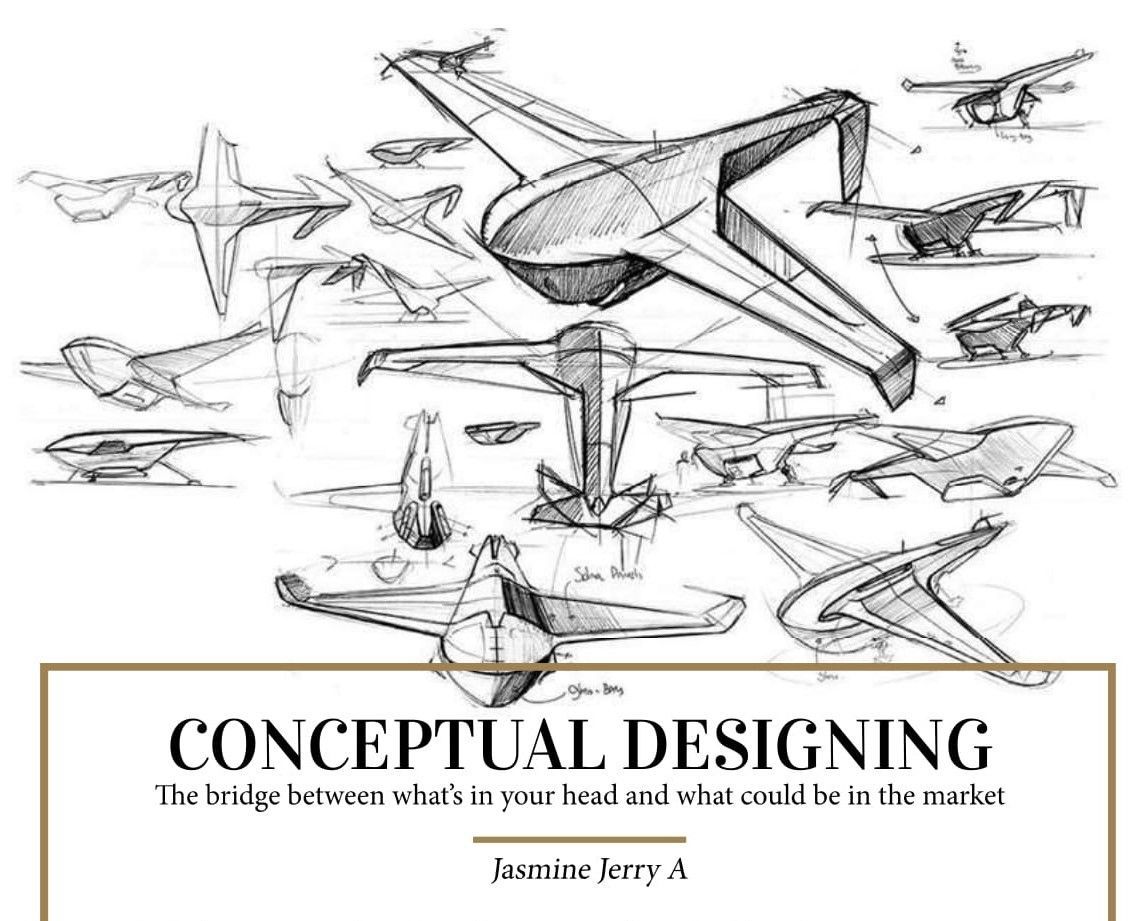Ever looked at a smartwatch or a curved screen TV and wondered how these ever came into existence? Felt relieved when your phone survived that unexpected rainy day outdoors? A few years back, these were concepts, yet to hit the market as products but inspired engineers and designers to create them. All these products went through a phase called the 'Conceptual Design' for them to see the light of the day.
Conceptual designing is defined as a particular kind of design and research activity, which is mediated by and targeted at the creation of new design concepts. The given problems may have a few impractical solutions, but coming up with these are rewarding as well. Conceptual designing isn't a new field, but this Design-Oriented research methodology has its own benefits, including providing new knowledge, combining the designing and researching practices together to create novel concepts.
What researchers say
In addition to the design being an approach to developing something new, Zimmerman et al. (2010) promote two other essential characteristics of the design that make it especially valuable for knowledge production: the iterative framing of the problems and the holistic and integrative approach. This approach emphasises the role of the construction of the resources that enable practitioners to achieve framing designs concepts as a novel, balanced, and relevant simplifications. It embraces openness, resource-construction, and collaboration. This design process to solve problems is different from the general analytical approach used.
So, how is Conceptual Designing done?
Let's go over the various stages in the conceptual designing process by taking the example of a recent project that I worked on as a representing IIT Kharagpur in the National Aerospace Conceptual Design Competition 2. The event required us to address challenging aerospace design problems that are relevant to the needs of our country. This 6-month long competition is organised by the Aeronautical Society of India, in different stages

Step 1: Design Requirements
Given a problem statement or rather a "research question" the first step is to outline the various requirements and functions that would be in the project plan. Here, the goal was to develop a LIDAR-equipped Unmanned High-Altitude Aerial Platform for the mapping of coastal habitats. Various specifications were listed out as challenges.
It had to be deployed from the first station at Porbandar; it had to collect LIDAR data travelling along nine coastal stations to finally land at Station 10- Kolkata. While the journey had to occur after sundown, the aircraft has to loiter above one of the stations within a specified radius during the daytime. To top it all up, the mission has to be completed within one week. At this stage, we defined the generic mission goals with some questions. What should it look like? What requirements drive the design? What technologies should be used? Who are the potential customers?

Step 2: Technology Availability
Extensive surveys of existing literature and products already available in the market were done to look for any existing knowledge and to avoid possible duplicates. While exact figures for each of these parameters are not vital at this stage, close estimates can be helpful to establish the scope of the design, as advised by the Purdue Writing Lab.
Step 3: Concept Sketch and Layout
Brainstorming sessions were held, and a concept was ideated. Brainstorming sessions create the perfect ambience for creativity to bloom and fresh ideas to be born. Collaborating with many minds leads to more viewpoints and encourage critical thinking for the process.
For further deepening into the research fields, one develops research questions:
- How to achieve the desired endurance of the flight?
- How to ensure the structure can safely carry the payload?
These questions push one to dig deeper and look carefully at the intricacies to come up with innovations. Further literature study and consulting lead to a better formulation of the solution. CAD models were created to give form to the idea. Appropriate market research was done to assess the feasibility of the model. Features unique to each design concept were emphasised in the model and described in greater detail. Also, the benefits of each design concept were clearly laid out.
Step 4: Analysis and Tradeoffs
Once the concept was elaborated, a performance analysis was done to check if there was scope for the addition of any other 'helper design elements' which could augment the current design. Relevant tradeoffs between the targeted parameters can give a higher grade output with better performances. For example, one could increase the area available for solar cells, thereby reducing the need to carry fuel and fuel cells for a higher altitude of the flight. Here, not only are the problems of additional energy requirement and the need for better lift generating surface solved, but also the fuel weight was reduced. Analysis and tradeoffs are an iterative process and the layout is modified for the inclusion of new and better features during each iteration.
Step 5: Revised Optimisation
Decisions made during conceptual design have a significant influence on the cost, performance, reliability, safety and environmental impact of a product. The whole team strives to achieve the delicate balance between the design requirements and the sustainability of the product. Before concluding, there are a few final questionings that must be pondered upon:
- Whether the product concept meets real customer needs?
- The practical feasibility of developing this different concept?
- Whether alternative technologies can deliver the same results here?
- Will it be profitable?

Step 6: Preliminary Design
In the final stages, reporting with a concept whitepaper that lays out the design goals, potential design concepts, and how each concept will meet the objectives. If the available resources permit, a prototype is built. Thus, a preliminary design of a High Altitude Platform was created.
The most important takeaway
Conceptual designing is the design of interactions, experiences, processes. It is the point at which people, knowledge, products, services, operations, and profitability meet the vision and limitless possibilities, each acting as a distinct colour on the canvas of the designer.
Though grounded in more abstract thinking, conceptual design often sees the potential flaws in the product design idea early on in the development stage. Developing a design concept is the most "fun" part of design engineering. This is where your imagination can run free, and you can come up with new and creative ideas. Tangible visions of what goods we might see in the market emerge through conceptual designing. One re-examines nascent trends and can aggressively pursue ambitious plans that are better for the people, the planet, and also for profit.


